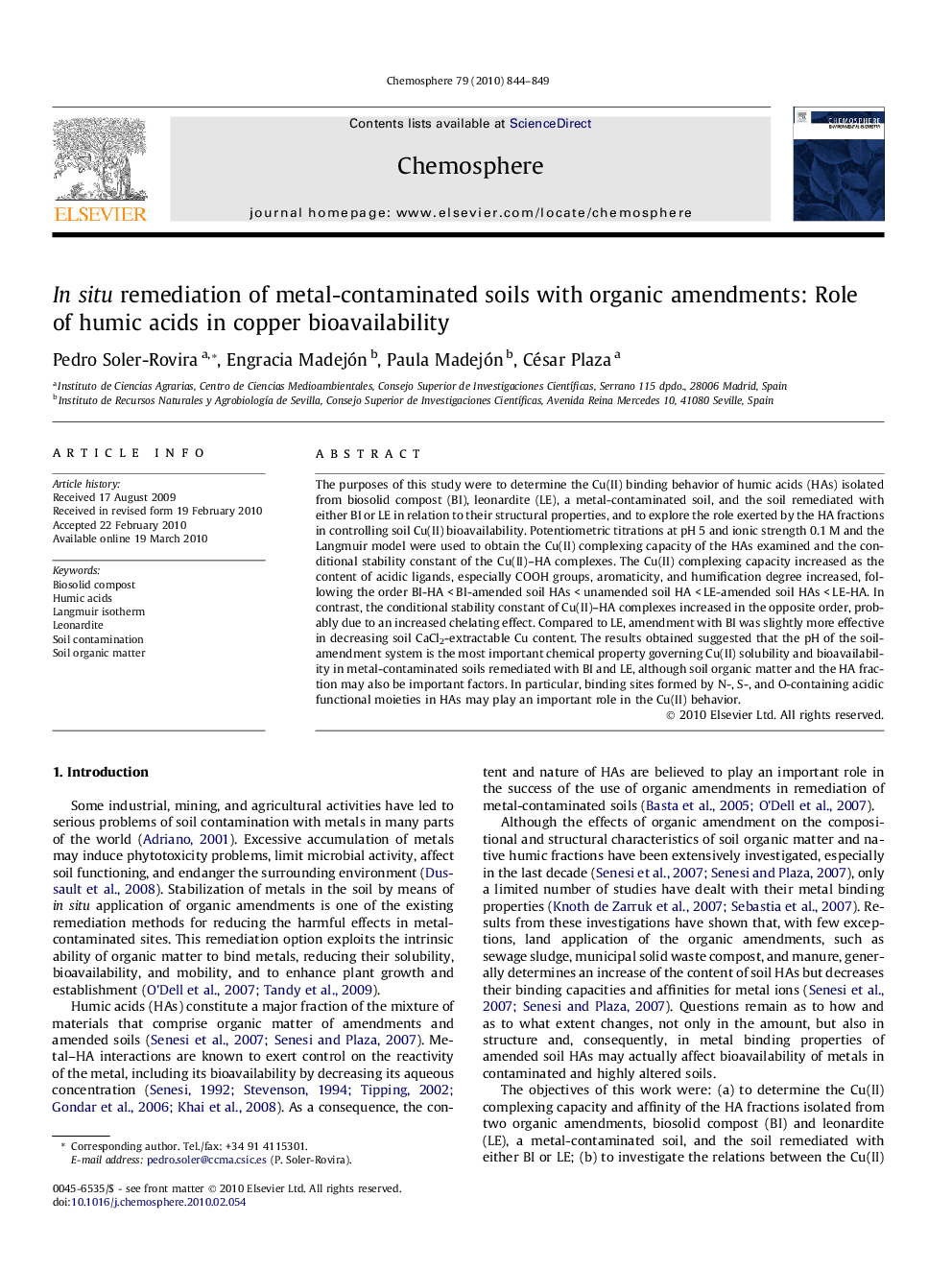| Article ID | Journal | Published Year | Pages | File Type |
|---|---|---|---|---|
| 4411775 | Chemosphere | 2010 | 6 Pages |
The purposes of this study were to determine the Cu(II) binding behavior of humic acids (HAs) isolated from biosolid compost (BI), leonardite (LE), a metal-contaminated soil, and the soil remediated with either BI or LE in relation to their structural properties, and to explore the role exerted by the HA fractions in controlling soil Cu(II) bioavailability. Potentiometric titrations at pH 5 and ionic strength 0.1 M and the Langmuir model were used to obtain the Cu(II) complexing capacity of the HAs examined and the conditional stability constant of the Cu(II)–HA complexes. The Cu(II) complexing capacity increased as the content of acidic ligands, especially COOH groups, aromaticity, and humification degree increased, following the order BI-HA < BI-amended soil HAs < unamended soil HA < LE-amended soil HAs < LE-HA. In contrast, the conditional stability constant of Cu(II)–HA complexes increased in the opposite order, probably due to an increased chelating effect. Compared to LE, amendment with BI was slightly more effective in decreasing soil CaCl2-extractable Cu content. The results obtained suggested that the pH of the soil-amendment system is the most important chemical property governing Cu(II) solubility and bioavailability in metal-contaminated soils remediated with BI and LE, although soil organic matter and the HA fraction may also be important factors. In particular, binding sites formed by N-, S-, and O-containing acidic functional moieties in HAs may play an important role in the Cu(II) behavior.
